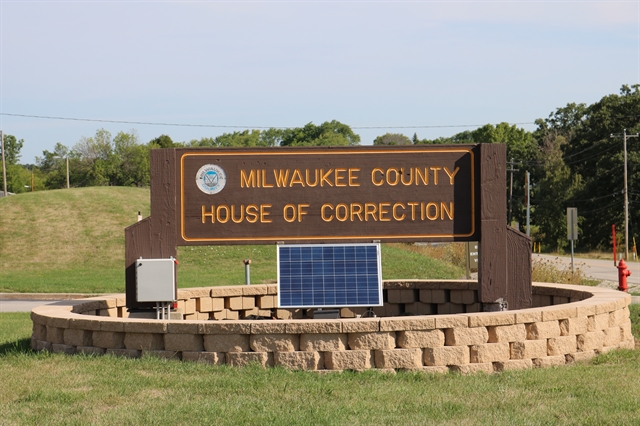Pandemic Lockdown Caused Problems At Correctional Facility
Report shows disruptive conduct, medical emergencies, altercations increased at CRC.
A review of incident reports by the Milwaukee County Community Reintegration Center (CRC) found a correlation between COVID-19 restrictions and worsening behavior and conditions in the facility.
Supervisors on the Milwaukee County Board’s Judiciary, Law Enforcement and General Services Committee previously requested data from the CRC, formerly known as the House of Correction, on “disturbances” in the facility during the COVID-19 pandemic. On Monday, a CRC official returned before the committee with approximately three years of data made up of “tens of thousands of data points” collated into a single graph.
“The report’s results were a little surprising,” said David Rugaber, CRC assistant superintendent.
Rugaber walked the supervisors through the data, which tracked incidents from 2019 through December 2022, showing the difference between times the facility reinstated restrictions on recreation and programming meant to limit the spread of COVID-19 and when those restrictions were relaxed or lifted all-together.
Beginning with a comparison of 2019, which is used as a benchmark for pre-COVID-19 incident levels, and the early months of the pandemic, Rugaber explained that the facility’s initial lockdown saw disruptive conduct, medical emergencies, physical altercations and miscellaneous emergencies all go up. One parameter — disobeyed orders — went down during the initial lockdown, but that outcome wouldn’t last during the facility’s successive lockdowns.
Rugaber used these generalized terms for the various disruptions to make the data legible. While most are self-explanatory, miscellaneous emergencies, he said, would include incidents like an inmate flooding their cell.
In the summer of 2021, when recreation time and programming were returned in full, the facility saw “a 32.5% decrease in disobeying orders, …a 46.3% decrease in disruptive conduct, surprisingly, there was a 44.2% decrease in medical emergencies, 49.6% decrease in physical altercations and a 23.9% decrease in miscellaneous disturbances,” Rugaber said.
That same year, when COVID-19 spiked and the facility closed recreational areas and limited programming, there was a “164% spike in disobeying orders, you see a 36.6% spike in disruptive conduct, you see a 42.6% spike in medical emergencies. And physical altercations went up by 56.6%. And miscellaneous emergencies went up by 10.5%,” Rugaber said.
The graph Rugaber produced for supervisors was adjusted for the average daily population of the facility and extrapolates the incidents during each period of lockdown and opening in order to get a measure of how many of these events would have occurred if continued over a 12 month period.
While the data paints a general picture of COVID-19 restrictions producing a less safe environment with more physical altercations and medical emergencies, there are “other factors” worth considering, Rugaber said.
Rugaber said the data could have been polluted in the summer of 2021 when the CRC opened a housing unit that it calls the “Robert-Six” unit. This unit has a “resident support team” and is for “individuals who cannot exist in general population,” Rugaber said. “They need more support from a mental health staff.”
Additionally, the facility had more people charged with felonies being held in custody pre-trial during the COVID-19 years than it did in 2019, Rugaber said. “What we found is felony pre-trials kind of punch above their weight a little bit when it comes to disturbances,” he said.
Rugaber said the facility also has a “younger and more inexperienced staff” than in the past. The CRC, like the Milwaukee County Jail, has struggled to retain and fully staff up. In 2022, it began limiting the number of pre-trial transfers it would accept from the jail because of this staffing shortage.
“In my experience, it takes about a year or two to really fully be able to control a housing unit,” Rugaber said. “And, you know, if we have younger staff, and they’re more inexperienced, there tend to be more disruptions in that housing unit.”
The CRC report can be read on Urban Milwaukee here.
MKE County
-
Ron Johnson Says Free-Market Principles Could Fix Education
 Jul 17th, 2024 by Graham Kilmer
Jul 17th, 2024 by Graham Kilmer
-
RNC Will Cause Some County Services To Be Moved to Wauwatosa
 Jul 12th, 2024 by Graham Kilmer
Jul 12th, 2024 by Graham Kilmer
-
Hank Aaron State Trail Will Be Closed For RNC, State Fair
 Jul 12th, 2024 by Graham Kilmer
Jul 12th, 2024 by Graham Kilmer






















